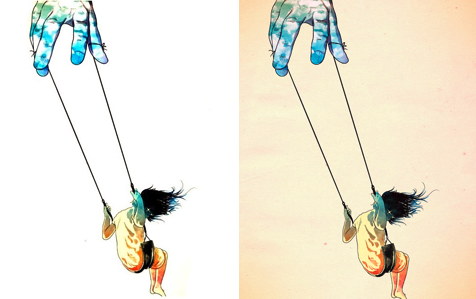Are the Bush bathroom paintings a hoax? —
A week ago, news broke that a hacker (calling himself 'Guccifer') had broken into George W. Bush's email account. The hacker sent some of the emails and photos he found there to the
Smoking Gun, which promptly published them.
Three of the leaked photos showed works of art, apparently by Bush. Two of the works were self-portraits in the bathroom — Bush taking a shower and a bath. The third showed Bush working on a more traditional scene of a seaside chapel.
It's the bathroom self-portraits that attracted all the attention. Understandably, since they were so odd. Art critics from the
New York Times and
New York magazine (among others) reviewed them, treating them as if they were serious works of art.
But Lee Rosenbaum (aka CultureGrrl)
asks an interesting question. How do we know that the bathroom paintings aren't a hoax? After all, information is only as good as its source, and the source of these paintings — the hacker Guccifer — isn't very credible. Rosenbaum notes, "If you get into bed with hackers, you may end up taking a bath."
An email from New York conservator Lenora Paglia first prompted Rosenbaum to wonder about the authenticity of the paintings. Paglia points out that it's odd the bathroom paintings are displayed on cheap wooden easels, whereas the chapel scene (the one we actually see Bush working on) stands on a top-of-the-line metal easel. Paglia's email:
Are we certain these paintings are actually by George W. Bush?
I notice that in the photo of him actually at work, he is shown in his home, painting on a nice new metal easel, which I would expect. However, the two bath pictures are displayed on two different beat-up old wooden easels, which are covered with paint marks, like a poor art student's. Would the former President be using such an easel? Also, notice how tentatively W paints—and yet at least one of the wood easels shows hasty-handed marks.
I wonder if the paintings are a hoax!
Of course, if the paintings have been falsely attributed to Bush, the obvious question is why wouldn't Bush deny they were his? One possibility is that the Secret Service has advised him not to comment in any way on the leaked material, beyond admitting that his account was hacked.
The other possibility is that Bush hasn't said anything because the paintings really are his. They're so strange that I'm kind of inclined to think this must be the case. But I think Rosenbaum and Paglia are justified to be skeptical. After all, the source of the paintings is a pretty dubious one.






















